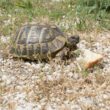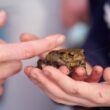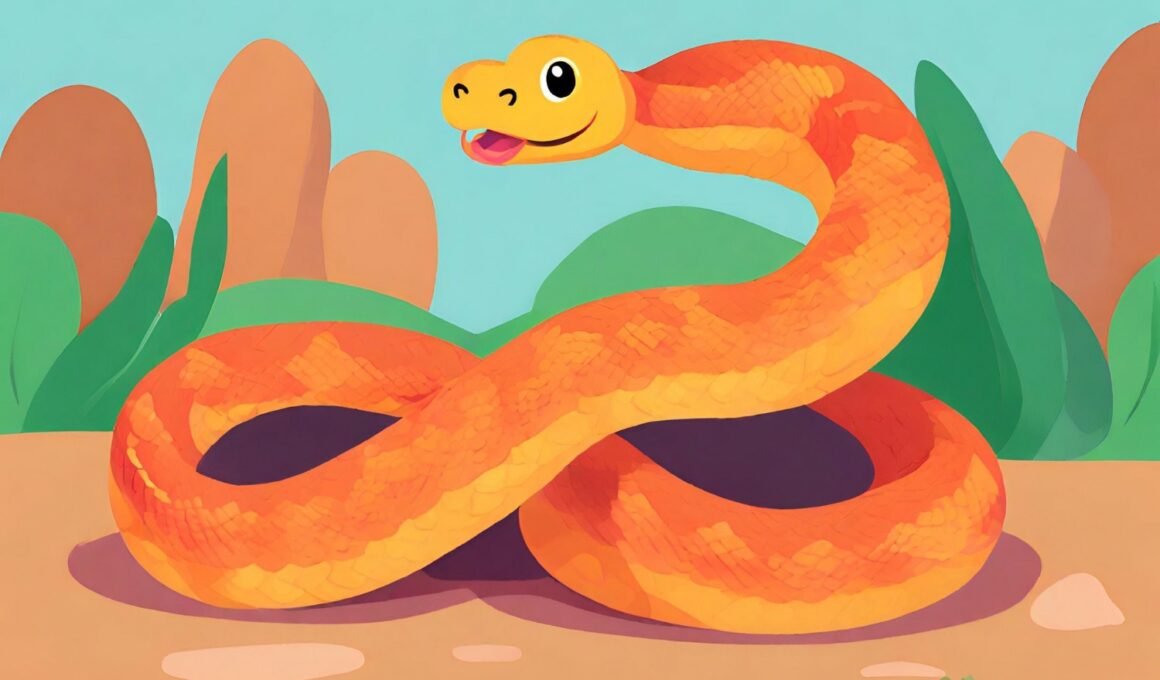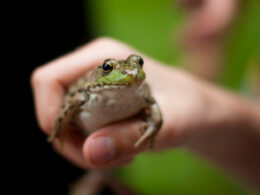In this article Show
Welcome to the fascinating world of Hognose snakes! As an ardent reptile enthusiast who’s spent countless hours learning about these captivating creatures, I understand the thrill of wanting to bring one into your home. But remember, owning a pet, especially a reptile, is a commitment.
The Hognose snake, with its upturned snout and playful antics, has captured the hearts of many. This guide aims to simplify the essentials of Hognose snake care, ensuring your scaly friend thrives in its new environment.
Whether you’re a seasoned reptile lover or someone considering a Hognose as your first pet snake, this comprehensive guide will provide you with the knowledge you need.
Types of Hognose Snakes
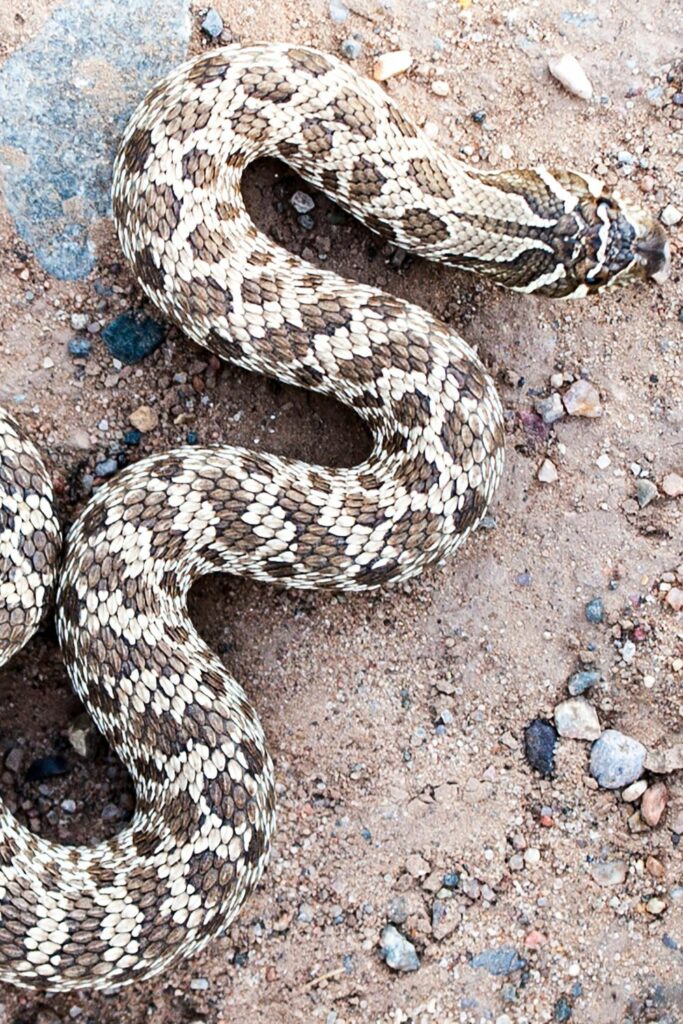
Hognose snakes, known for their distinct upturned snouts, are a favorite among reptile enthusiasts for good reason. While many are familiar with their charismatic bluffing displays, fewer realize the diversity within this group of snakes.
Let’s explore the three primary types of Hognose snakes you might encounter: the Eastern, Western, and Southern Hognose.
1. Eastern Hognose (Heterodon platirhinos)
- Distribution: Found primarily in the eastern United States, ranging from Florida up to Minnesota and as far west as Texas.
- Appearance: Often larger with a more robust body, Eastern Hognoses can vary greatly in color, from browns to greens, and even blacks. They may also have intricate patterns or be nearly solid in color.
- Notable Characteristics: This species is especially known for its ability to play dead when threatened. It’ll often roll onto its back and gape its mouth, putting on quite the dramatic display.
2. Western Hognose (Heterodon nasicus)
- Distribution: Native to the central United States, from southern Canada to northern Mexico.
- Appearance: Typically smaller and more stout compared to the Eastern variety, they often exhibit sandy or dusty colorations, blending well with their arid habitats.
- Notable Characteristics: The Western Hognose has a reputation for being a more docile species, often preferred by first-time snake owners. Its bluffing behavior involves hissing and flattening its neck, mimicking the appearance of a cobra.
3. Southern Hognose (Heterodon simus)
- Distribution: These are found in the southeastern United States, with a range that spans from southern North Carolina to northern Florida and west to eastern Texas.
- Appearance: Often smaller than the other two varieties, the Southern Hognose has a light, sandy appearance with darker band patterns.
- Notable Characteristics: Regrettably, this species is facing habitat loss and is becoming increasingly rare, making it more challenging for enthusiasts to find.
According to a study published in the Britannica Journal on Hognose snakes, there has been a shift in their distribution patterns over the years, largely due to habitat loss and human encroachment.
It underscores the importance of understanding and appreciating these snakes, not just for their captivating behaviors but also for their ecological significance.
In summary, each Hognose snake species has its unique quirks and characteristics, but all share a need for conservation and proper care.
Setting Up the Perfect Enclosure
Creating a comfortable environment for your Hognose snake is paramount to its health and happiness.
Think of the enclosure as their home – it needs to provide security, appropriate conditions, and a space that mimics their natural habitat. Let’s walk through the essentials of setting up the ideal enclosure for your slithery friend.
Enclosure Size and Type Recommendations
- Size: Young Hognose snakes can start in a 10-gallon tank. As they grow, however, they’ll need more space. Adult Western Hognoses typically do well in a 20-gallon tank, while the larger Eastern Hognose may require a 30-gallon setup.
- Type: Glass terrariums with a mesh lid are popular and provide good visibility.
However, plastic enclosures or PVC cages, which retain humidity better, can also be great options. Remember, secure locking mechanisms are crucial to prevent escapes!
Substrate Options and Their Pros and Cons
Aspen Shavings
- Pros: Absorbent, easy to clean, and allows snakes to burrow.
- Cons: Can become moldy in high humidity.
Cypress Mulch
- Pros: Retains humidity well, naturalistic appearance.
- Cons: May need frequent changing if soiled.
Coconut Coir
- Pros: Excellent humidity retention, eco-friendly.
- Cons: Can be dusty when dry.
Reptile Carpet
- Pros: Reusable, easy to clean.
- Cons: Doesn’t allow for natural burrowing behavior.
Note: Avoid using pine or cedar shavings, as they can release harmful oils that are toxic to snakes.
Ideal Temperature and Humidity Levels
- Temperature: Hognose snakes thrive in a temperature gradient, with a warm side between 85-90°F (29-32°C) and a cooler side between 75-80°F (24-27°C). Use an under-tank heater controlled by a thermostat for consistent warmth.
- Humidity: Maintain a humidity level between 30-50%. Hognoses don’t require high humidity, but during shedding, it might be helpful to slightly increase humidity or provide a moist hide.
Lighting and UVB Needs
Hognose snakes, being primarily diurnal, benefit from a natural light cycle. However, they don’t have stringent UVB requirements. If you choose to provide UVB lighting, ensure it’s not too intense and always provide areas of shade.
A standard 12-hour light/dark cycle, which can be achieved with natural room light or a low-intensity LED, is typically sufficient.
In wrapping up this section, remember that each snake is an individual. Regularly monitor your Hognose’s behavior and adjust the enclosure conditions as needed. Observing your snake will give you the best insights into its comfort and well-being.

Diet & Feeding
Understanding the dietary needs of your Hognose snake is crucial for its long-term health and vitality. These fascinating reptiles have specific dietary habits that distinguish them from many other snake species.
Let’s delve into the aspects of feeding your Hognose snake, ensuring it receives the right nutrition throughout its life.
Preferred Prey in the Wild vs. Captivity
In the Wild
Hognose snakes are opportunistic feeders in their natural habitat. They primarily consume amphibians like toads and frogs. Their upturned snouts are adapted for digging, allowing them to unearth buried prey.
In Captivity
While it’s possible to feed Hognose snakes amphibians in captivity, most are transitioned to a diet of rodents, particularly mice.
Rodents are nutritionally complete and more readily available for snake owners. For pickier eaters, scenting the mouse with an amphibian scent can encourage feeding.
Frequency and Size of Feeding
- Hatchlings: Baby Hognose snakes should be fed once every 5-7 days. At this stage, they’ll typically consume pinky mice.
- Juveniles: As they grow, feeding can be spaced to once a week. Gradually increase the size of the prey in line with the snake’s growth.
- Adults: Adult Hognose snakes can be fed once every 10-14 days. The prey size should be roughly 1 to 1.5 times the width of the snake’s mid-body.
Tip: Always monitor your snake’s weight and body condition. Overfeeding can lead to obesity, so adjust the feeding frequency and portion size as needed.
Supplements and Dietary Considerations
Calcium and Vitamins
If you’re feeding your snake frozen-thawed prey, it’s typically already a well-rounded meal. However, for added nutrition, you can occasionally dust the rodent with a calcium or reptile multivitamin powder.
Hydration
While Hognose snakes obtain much of their hydration from their prey, it’s essential to provide a shallow water dish in their enclosure. The snake will drink from it as needed and may also soak in it occasionally.
Refusing Food
Don’t be alarmed if your Hognose refuses a meal occasionally. Snakes can be finicky eaters at times. However, prolonged refusal, especially paired with other symptoms, could indicate a health issue, and you might need to consult a vet.
Feeding your Hognose snake can be a rewarding experience, allowing you to witness its natural hunting behaviors. By offering a diet that closely mirrors their nutritional needs, you’ll ensure a thriving, active, and healthy pet for years to come.
Behavior & Temperament
Hognose snakes have a reputation that precedes them – not because of any danger they pose, but rather for their intriguing behaviors and dramatic performances. These snakes are a blend of docility and theatrical antics, making them not only a joy to care for but also endlessly fascinating to observe.
Hognose Snake’s Unique Behaviors and ‘Bluffing’ Tactics
The “Bluff”
One of the most iconic behaviors of Hognose snakes is their bluff. When threatened, a Hognose might flatten its neck and hiss, imitating the hood of a cobra. This act is purely for show and is an attempt to ward off potential threats.
Playing Dead
In a dramatic turn of events, if the “bluff” doesn’t work, some Hognoses will roll onto their back, open their mouth, and play dead. This feigned death act, known as “thanatosis”, can be startling for first-time observers but is a harmless and natural behavior.
Handling Tips and Precautions
Start Slow
If you’ve just brought your Hognose home, give it a week or two to acclimate before you start handling it. This ensures the snake feels secure in its new environment.
Gentle Grasp
When picking up your Hognose, approach it calmly and scoop it up from beneath, supporting as much of its body as possible. Avoid grabbing it from above, as this can be perceived as a threat.
Short Sessions
Begin with short handling sessions, gradually increasing the duration as your snake becomes more accustomed to it. This builds trust and minimizes stress.
Post-Feeding
It’s essential to avoid handling your snake for at least 48 hours after feeding to prevent regurgitation.
Signs of Stress and Ways to Mitigate
- Hiding Excessively: While it’s natural for snakes to seek refuge and hide if your Hognose is always hidden and not active during its usual periods, it could be a sign of stress.
- Erratic Behavior: Rapid, aimless movements or frequent attempts to escape the enclosure can indicate discomfort or anxiety.
- Loss of Appetite: An occasional missed meal isn’t a cause for concern, but a persistent lack of interest in food might signal stress or underlying health issues.
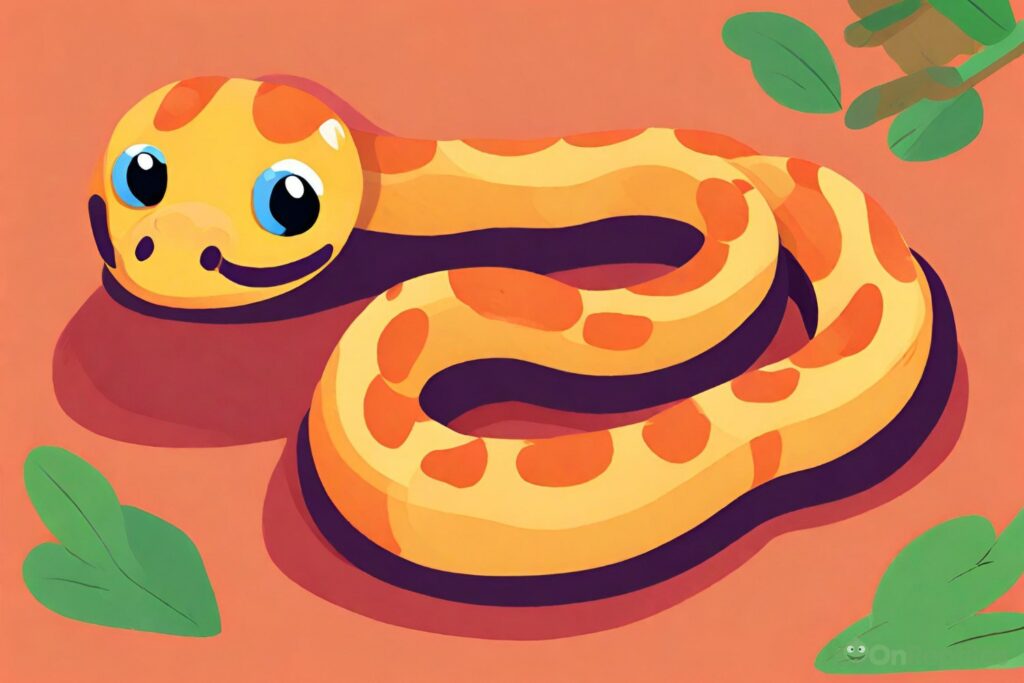
To Alleviate These Stress Signs
- Check the Environment: Ensure the enclosure’s temperature, humidity, and lighting are optimal.
- Provide Ample Hides: Offer multiple hiding spots in the enclosure to help your snake feel secure.
- Limit Disturbances: Keep the enclosure in a quiet, low-traffic area and minimize sudden environmental changes.
In essence, understanding the unique behaviors and temperament of the Hognose snake is key to forming a harmonious bond with your pet. Observing and respecting their instincts, while also providing a supportive environment, will ensure they feel safe and content in your care.
Health & Wellness
Like any pet, Hognose snakes can encounter health challenges. But with proper care, awareness, and regular check-ups, you can ensure your snake thrives and lives a healthy life. Being proactive about your Hognose snake’s health is essential for early detection of potential issues and seeking timely intervention.
Common Health Issues and Prevention
- Respiratory Infections: Symptoms include wheezing, excess mucus, and open-mouth breathing.
- Prevention: Ensure correct humidity levels in the enclosure and keep it clean.
- Mites and Parasites: Tiny black or red pests can infest your snake’s skin, leading to restlessness and frequent soaking.
- Prevention: Regularly clean and disinfect the enclosure. Quarantine new snakes before introducing them to an established environment.
- Stomatitis (Mouth Rot): This is an inflammation of the mouth, evident by redness, swelling, and pus.
- Prevention: Keep the enclosure clean and ensure your snake’s diet is nutritionally adequate.
- Digestive Issues: Constipation or regurgitation can occur due to various reasons, including low temperatures.
- Prevention: Ensure the enclosure has the right temperature gradient and avoid handling the snake soon after feeding.
When to See a Vet
- Regular Check-ups: Even if your snake seems perfectly healthy, an annual vet visit is a good practice for a general health assessment.
- Visible Symptoms: If your Hognose displays any of the above health issues or any other abnormal behavior or physical changes, it’s time to consult with a reptile vet.
- Loss of Appetite: While snakes can occasionally skip meals, a prolonged lack of interest in food warrants a vet visit.
Shedding: What to Expect and How to Assist
- Pre-shedding Signs: Before shedding, your snake’s eyes may turn a milky blue, and its skin will appear duller.
- Frequency: Shedding frequency varies based on age and growth rate. Younger snakes shed more often as they grow.
Assisting the Shed
- Humidity: During the shedding process, slightly increase the enclosure’s humidity to aid in skin removal.
- Soaking: If your snake struggles with a shed, a lukewarm shallow bath can help. Always supervise during soaking.
Remember, the health and wellness of your Hognose snake largely depend on the care you provide. Being vigilant about potential health issues and maintaining an optimal environment will go a long way in ensuring your snake’s well-being.
Breeding & Reproduction
Breeding Hognose snakes can be an enriching experience, offering insight into the captivating world of reptile reproduction. Given the right environment and care, these snakes can reproduce successfully in captivity.
As we delve into the intricacies of Hognose snake breeding, it’s crucial to be armed with both knowledge and patience.
According to a study published in the Journal of Herpetological Research, Hognose snakes exhibit unique mating behaviors and reproductive strategies that can significantly influence their breeding success in captivity.
Understanding these behaviors is key to fostering a conducive environment for breeding.
Basics of Hognose Snake Reproduction
Sexual Maturity
Typically, Hognose snakes reach sexual maturity between 2-3 years of age. This can slightly vary based on individual health and environmental factors.
Mating Season
In the wild, Hognose snakes usually breed in the spring, shortly after emerging from brumation (a reptile’s version of hibernation).
Brumation
While not always necessary in captivity, mimicking a period of brumation can increase the likelihood of successful breeding. This involves exposing the snakes to cooler temperatures for a specific duration before the breeding season.
Setting Up a Breeding Environment
Temperature Control
A slight drop in temperature can trigger the breeding behavior. However, after mating, ensure that the female has access to a warm basking spot.
Hide Boxes
Providing multiple hide boxes can offer the snakes a choice of laying sites, making the female feel secure when laying eggs.
Separate Enclosures
While cohabitation can sometimes stimulate breeding, it’s essential to monitor the snakes for any signs of stress or aggression. Separation might be necessary at times.
Caring for Eggs and Hatchlings
Incubation
Once eggs are laid, transfer them to an incubator set at around 78-82°F. Ensure a high humidity level but avoid direct moisture on the eggs.
Egg Monitoring
Over the incubation period, check the eggs for mold or signs of decay. Healthy eggs should be firm to the touch.
Hatchling Care
Once hatched, transfer the babies to individual enclosures with appropriate substrate and hides. Initial feeding can be challenging, so patience and persistence are key. Offering smaller prey items like pinky mice can entice them to eat.
Remember, breeding Hognose snakes requires commitment and dedication. The process might present challenges, but the joy of witnessing the birth and growth of these fascinating creatures makes it all worthwhile.
Conservation & Ethics
In the age of ecological consciousness, the ethics of pet ownership, particularly of wild or exotic animals, are rightly scrutinized.
When it comes to Hognose snakes, understanding their conservation status and ensuring ethical ownership becomes pivotal not only for the well-being of the individual snake but also for the broader health of the species and its habitat.
Current Conservation Status
The conservation status of Hognose snakes varies depending on the specific species and their geographic range. For instance:
- Eastern Hognose: Generally, the Eastern Hognose is considered of “Least Concern” by the IUCN, meaning they are not currently threatened.
- Western Hognose: Similarly, Western Hognose snakes are abundant in many areas but can face threats in specific regions.
- Southern Hognose: This species is of more significant concern, with populations dwindling in several areas due to habitat loss and other anthropogenic factors.
How to Ethically Obtain a Hognose Snake
- Adoption: Consider adopting a Hognose snake from a rescue or sanctuary. This approach ensures you’re not inadvertently supporting the illegal pet trade.
- Reputable Breeders: If purchasing, always buy from a reputable breeder who follows ethical breeding practices. They should be able to provide detailed lineage information and care history.
- Avoid Wild-Caught: Wild-caught snakes not only face considerable stress when captured and transported, but their removal also can impact local ecosystems. Always opt for captive-bred individuals.
Supporting Conservation Efforts
- Educate Yourself: Continuously educate yourself about the Hognose snake’s natural habitat and the threats they face. Knowledge is the first step towards meaningful action.
- Contribute Financially: Consider donating to organizations and initiatives focused on reptile conservation, habitat restoration, and research.
- Spread Awareness: Share your knowledge about Hognose snakes with others, emphasizing the importance of ethical ownership and conservation.
In conclusion, the joy of owning a Hognose snake is magnified when done with consciousness and responsibility. By prioritizing ethical choices and supporting conservation efforts, snake enthusiasts can play a pivotal role in ensuring a brighter future for these unique reptiles.

